Home>diy>Building & Construction>Must-Haves When Building A House
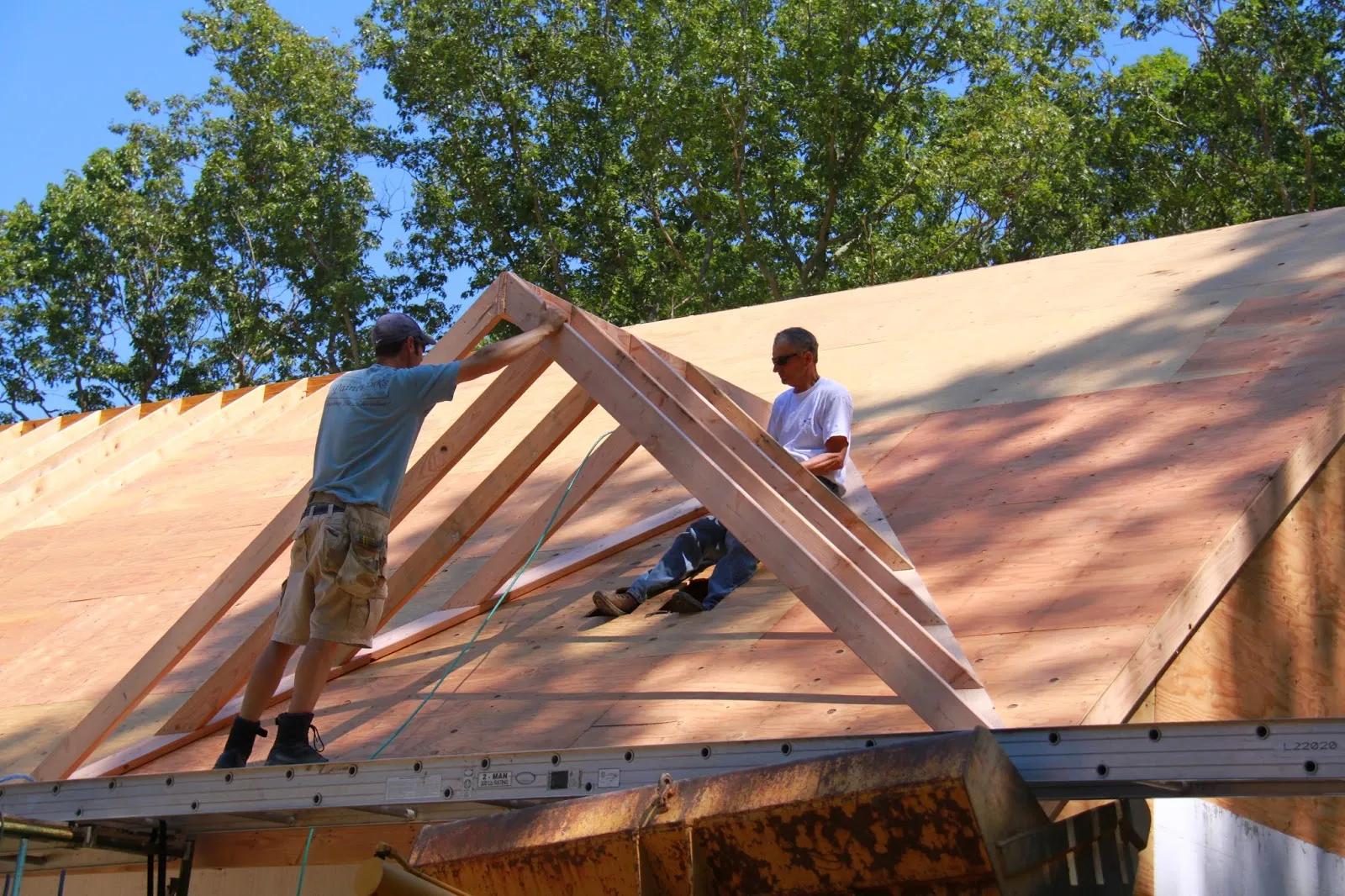

Building & Construction
Must-Haves When Building A House
Modified: March 1, 2024
Discover the essential building construction must-haves for your dream house. From quality materials to skilled contractors, ensure a successful project.
(Many of the links in this article redirect to a specific reviewed product. Your purchase of these products through affiliate links helps to generate commission for Storables.com, at no extra cost. Learn more)
Introduction
Building a house is an exciting and rewarding endeavor. It allows you to create a space that meets your unique needs and preferences. However, the process of building a house can be complex and daunting, requiring careful planning and decision-making. From choosing the right location to selecting the materials and finishes, each step plays a crucial role in creating a house that you will be proud to call home. In this article, we will explore the must-haves when building a house to help you navigate the construction process with confidence.
Key Takeaways:
- Building a house involves careful planning, from choosing the right location to implementing advanced security systems. Each decision impacts the final outcome, ensuring a safe, efficient, and beautiful living space.
- Integrating smart home automation features and sustainable landscaping practices enhances the safety, convenience, and environmental sustainability of your dream home. Careful consideration of every aspect ensures a harmonious and inviting living environment.
Read more: 10 Must-Have Toiletries For Your New House
Location- Choosing the right location for your house
When it comes to building a house, the location is one of the most important factors to consider. The right location can significantly impact your quality of life, convenience, and even the value of your property. Here are some key factors to keep in mind when choosing the right location for your house.
1. Accessibility: Consider the proximity of your desired location to essential amenities such as schools, hospitals, grocery stores, and transportation hubs. Easy access to these facilities will enhance convenience and save you time and energy in the long run.
2. Neighborhood: Assess the neighborhood where you plan to build your house. Look for well-maintained streets, a sense of community, and low crime rates. Research the reputation of the neighborhood and seek feedback from locals to get a better understanding of the area.
3. Natural Surroundings: Take into account the natural surroundings of your potential location. Are there parks, green spaces, or recreational areas nearby? Consider the views, sunlight exposure, and proximity to natural elements that can contribute to a peaceful and healthy living environment.
4. Future Development: Research any future development plans for the area. If there are proposed infrastructure projects, commercial developments, or major road expansions, these factors can impact the value and appeal of your property in the long run.
5. Climate Considerations: Take into account the climate of the area. Consider the average temperature, rainfall, and seasonal variations. If you have specific preferences regarding the climate, such as a preference for warmer or cooler weather, choose a location that aligns with your preferences.
6. Resale Value: While building your dream house is a long-term commitment, it is essential to consider the resale value of the property. Choose a location that is highly sought after and likely to appreciate over time. A thriving neighborhood with strong demand will ensure your investment holds its value in the future.
Remember to assess your own personal needs and preferences when choosing a location for your house. Consider factors such as proximity to family and friends, your workplace, and recreational activities. A location that aligns with your lifestyle and priorities will make your daily life more enjoyable and convenient.
Budgeting and Financing – Determining your budget – Finding the right financing options
Building a house is a significant investment, and it’s crucial to establish a budget before starting the construction process. Determining your budget will help you make informed decisions and ensure that you don’t overspend. Here are some key considerations when determining your budget for building a house.
1. Assess Your Financial Situation: Begin by evaluating your financial resources and capabilities. Consider your savings, potential sources of income, and any existing debts or financial commitments. This assessment will give you a clear understanding of how much you can afford to spend on building your house.
2. Define Your Priorities: Determine your priorities when it comes to building your house. Identify the must-have features and elements that are most important to you. This will help you allocate your budget effectively and ensure that your dream house aligns with your priorities.
3. Research Construction Costs: Research construction costs in your desired location and consult with professionals in the industry. Consider factors such as the size of the house, the level of finishes you desire, and any unique requirements you may have. Understanding the average costs will give you a realistic estimate of how much you should budget for your project.
4. Include Contingency Funds: It’s essential to include a contingency fund in your budget to account for unexpected expenses that may arise during the construction process. Aim to set aside around 10% to 15% of your total budget for unforeseen costs or changes that may occur during the project.
Once you have determined your budget, the next step is to explore financing options to fund your house construction. Here are some financing options commonly used for building a house.
1. Traditional Mortgage: A traditional mortgage is a common option for financing a new house. You can apply for a mortgage loan through a bank or lending institution, which will provide you with the necessary funds to cover the construction costs. Interest rates, loan terms, and eligibility criteria may vary, so it’s essential to shop around and compare offers from different lenders.
2. Construction Loan: If you plan to build your house from the ground up, a construction loan may be a suitable option. Construction loans generally have higher interest rates and require you to make interest-only payments during the construction phase. Once the construction is complete, the loan can be converted into a traditional mortgage. Speak with your bank or lender to determine if a construction loan is the right choice for your project.
3. Personal Savings: If you have substantial personal savings, you may choose to fund your house construction using your own funds. This option eliminates the need for financing and potentially saves you money on interest payments. However, it’s important to consider the potential risk of tying up a large portion of your savings in one investment.
4. Combined Financing: Depending on your financial situation, you may opt for combined financing, which involves using a combination of personal savings, a mortgage, or a construction loan. This approach can help you optimize your funds and customize your financing based on your specific needs and circumstances.
Remember to consult with a financial advisor or mortgage specialist to evaluate your options and select the most suitable financing solution for your house construction. By accurately determining your budget and securing the right financing, you can embark on your construction journey with confidence and peace of mind.
Design and Architecture – Hiring an architect – Choosing a suitable architectural style
The design and architecture of your house play a vital role in creating the atmosphere, functionality, and visual appeal of your home. Whether you have a specific vision in mind or need guidance in selecting the right design, hiring an architect is a crucial step in the building process. Here are a few considerations when hiring an architect and choosing a suitable architectural style for your house.
1. Hiring an Architect: When it comes to designing and building a house, working with an architect is highly recommended. Architects are skilled professionals trained in translating your ideas and preferences into practical and aesthetically pleasing designs. They can also assist with navigating building codes, obtaining permits, and overseeing the construction process. It’s essential to research and interview multiple architects to find one whose style, experience, and communication style align with your needs.
2. Assessing the Architect’s Portfolio: Before hiring an architect, take the time to review their portfolio. Look for previous projects that resonate with your style and preferences. Consider the overall design, layout, and attention to detail in their work. This will give you an idea of their capabilities and whether they would be a good fit for your project.
3. Defining Your Architectural Style: Having a clear understanding of your preferred architectural style will help guide the design process. Consider your personal tastes, lifestyle, and the surrounding environment when selecting a style. Some popular architectural styles include modern, contemporary, traditional, farmhouse, and Mediterranean. Research the characteristics of each style and gather inspiration from magazines, online sources, and local architecture in your area.
4. Planning for Future Needs: As you work with your architect, consider your current and future needs. Think about factors such as the number of bedrooms, size of living spaces, outdoor areas, and any specific features or rooms you desire. An experienced architect can help you optimize the layout and incorporate functional elements that will evolve with your lifestyle over time.
5. Considering Sustainability: Sustainable design is becoming increasingly important in modern construction. Discuss with your architect the possibility of incorporating sustainable elements into your design, such as energy-efficient systems, solar panels, proper insulation, and water-efficient fixtures. Building a sustainable house not only benefits the environment but can also lead to long-term cost savings.
6. Building Codes and Regulations: Your chosen architectural style should comply with local building codes and regulations. An experienced architect will be well-versed in these requirements and can ensure that your design and materials meet the necessary standards. This will save you potential headaches and delays during the construction process.
Remember, the design and architectural style of your house should reflect your personality and meet your functional needs. By hiring an architect who understands your vision and preferences, you can create a one-of-a-kind home that truly represents your unique lifestyle. Take the time to research, collaborate, and communicate effectively to ensure that your design dreams become a reality.
Building Permits and Regulations – Understanding local building codes and regulations – Obtaining necessary building permits
When building a house, it is essential to navigate through the maze of building codes and regulations to ensure that your construction project is compliant with local laws and standards. Understanding these regulations and obtaining the necessary building permits is crucial for a smooth and legal construction process. Here are some key considerations when it comes to building permits and regulations.
1. Research Local Building Codes: Every jurisdiction has its own set of building codes and regulations that govern construction projects. These codes outline the minimum requirements for safety, structural integrity, electrical systems, plumbing, accessibility, and more. Research and familiarize yourself with the specific building codes applicable to your location. This information is typically available through government websites or local building departments.
2. Consult with Professionals: While you can research building codes independently, it is advisable to consult with professionals who are familiar with local regulations. Architects, builders, or construction consultants can help ensure that your project adheres to all applicable codes and requirements.
3. Design and Documentation: When applying for building permits, you will need to submit detailed drawings and plans of your proposed construction. These documents must accurately depict the design, materials, dimensions, and other pertinent information. Working with an architect or drafting professional can help create comprehensive documentation that meets the requirements of the building department.
4. Building Permit Applications: The process for obtaining building permits can vary depending on your location. Typically, you will need to complete a permit application, submit the required documents, pay the necessary fees, and undergo a review and approval process. It is essential to submit all the required information accurately and in a timely manner to avoid delays.
5. Permits for Different Phases: Building permits may be required for different phases of construction, including site clearing, foundation, framing, electrical, plumbing, and final inspections. Be sure to identify the specific permits needed for each phase so that you can ensure compliance throughout the construction process.
6. Inspections and Compliance: Building departments conduct inspections at various stages of construction to ensure compliance with the approved plans and building codes. It is crucial to schedule these inspections promptly and address any issues that arise during the process. Failure to comply with inspections may result in fines, delays, or even the need to redo certain aspects of the construction.
While navigating building permits and regulations can be complex, complying with them is essential for the safety, quality, and legality of your construction project. Working with professionals, understanding the local building codes, and obtaining the necessary permits will ensure that your house is built according to the approved plans and meets all the necessary standards.
Read more: What Must A Hand Sink Have
Construction Materials – Selecting high-quality construction materials – Understanding the pros and cons of different materials
Choosing the right construction materials is crucial for building a high-quality and durable house. The materials you select will impact the strength, functionality, aesthetics, and lifespan of your home. It is important to consider factors such as durability, cost, maintenance, and environmental impact when making your choices. Here are some key considerations when it comes to construction materials.
1. Foundation Materials: The foundation is the base of your house and requires sturdy materials to ensure stability and longevity. Common foundation materials include concrete, reinforced concrete, and treated wood. Concrete provides excellent strength and durability, while treated wood can be more cost-effective and suitable for certain soil conditions.
2. Framing Materials: The framing materials you choose for your house will determine its structural integrity. Popular framing materials include wood, steel, and engineered wood products such as plywood or laminated beams. Wood is widely used for its versatility, affordability, and ease of construction. Steel offers exceptional strength and durability and is a preferred choice for larger structures or areas prone to extreme weather conditions.
3. Exterior Cladding: The exterior cladding materials not only protect your house from the elements but also contribute to its aesthetic appeal. Common cladding options include brick, stucco, vinyl siding, fiber cement, and natural stone. Each material has its own advantages and considerations, such as maintenance requirements, durability, and resistance to moisture or pests. Consider your climate, desired aesthetic, and long-term maintenance preferences when selecting the exterior cladding.
4. Roofing Materials: The roofing material is critical for protecting your house from the elements and providing insulation. Common roofing options include asphalt shingles, metal, clay or concrete tiles, and composite materials. Asphalt shingles are cost-effective and commonly used, while metal roofing offers longevity and energy efficiency. Clay or concrete tiles provide a distinctive look but can be heavier and more expensive.
5. Interior Finishes: Interior finishes include materials such as flooring, wall coatings, and cabinetry. Popular flooring options include hardwood, laminate, tile, and carpet, each with their own pros and cons in terms of durability, maintenance, and aesthetic appeal. Wall coatings can range from paint to wallpaper or specialized finishes depending on your preferences. Cabinetry materials can include solid wood, plywood, or engineered wood products, each offering different levels of quality and cost.
6. Plumbing and Electrical Systems: When it comes to the plumbing and electrical systems, opting for high-quality materials is essential for safety and longevity. Ensure that the pipes, wires, fixtures, and fittings are made from reliable and durable materials that meet the required standards. Copper and PVC pipes are commonly used for plumbing, while copper or aluminum wires are used for electrical systems. Consult with professionals to ensure that your chosen materials are suitable for your specific needs.
By selecting high-quality construction materials, you can ensure the longevity and functionality of your house. However, it is important to balance quality with cost and consider your specific needs and preferences. Consult with experts in the field, conduct thorough research, and weigh the pros and cons of different materials to make informed decisions that will result in a well-built and beautiful home that stands the test of time.
Foundation – Types of foundations and their considerations
The foundation is a critical component of any house as it provides the structural support and stability necessary to withstand the weight of the structure. There are several types of foundations available, and the choice depends on factors such as soil conditions, climate, budget, and local building codes. Here are some common types of foundations and their considerations.
1. Slab Foundation: A slab foundation is a simple, cost-effective option commonly used in areas with stable, non-expansive soil. It consists of a concrete slab poured directly on the ground. Slab foundations require minimal excavation and can be suitable for buildings with no basements or crawlspaces. Considerations include proper insulation to prevent heat loss or gain, and ensuring good drainage to avoid water pooling underneath the slab.
2. Crawlspace Foundation: A crawlspace foundation is similar to a slab foundation, but it includes a small space between the ground and the bottom of the house. Crawlspace foundations provide easier access to plumbing and electrical lines and allow for ventilation and maintenance. Considerations include proper ventilation to prevent moisture buildup and the use of moisture-resistant materials to protect against dampness and potential mold growth.
3. Basement Foundation: A basement foundation provides a full lower level below the house, commonly used for additional living space or storage. Basement foundations require deep excavation and involve the construction of walls and footings. Considerations for basement foundations include waterproofing, insulation, and proper drainage to prevent water penetration and flooding. Adequate egress points for emergency exits and natural light should also be considered.
4. Pier and Beam Foundation: A pier and beam foundation consists of individual footings (pier) and support beams that elevate the structure above the ground. This type of foundation is suitable for areas with expansive clay soils, as it allows for movement and prevents damage caused by soil expansion and contraction. Considerations include proper ventilation and insulation in the crawl space, as well as regular maintenance and inspection of the support beams and footings.
5. Reinforced Concrete Foundation: Reinforced concrete foundations are designed to provide superior strength and durability. They involve the use of steel reinforcement bars (rebar) embedded within the concrete to increase its load-bearing capacity. Reinforced concrete foundations are suitable for areas with challenging soil conditions or in regions prone to earthquakes or high winds. Considerations include professional design and construction to ensure that the foundation meets structural requirements and local building codes.
When choosing a foundation type, it is essential to consult with a structural engineer or foundation specialist who can assess the soil conditions and provide recommendations based on your specific location and requirements. Additionally, local building codes and regulations must be adhered to throughout the construction process to ensure structural integrity and safety. By carefully considering the different types of foundations and their considerations, you can select the most appropriate foundation for your house to ensure its stability and longevity.
Structural Design – Choosing a sound structural design – Incorporating earthquake-resistant features
When building a house, the structural design is of utmost importance as it ensures the stability, strength, and safety of the building. Choosing a sound structural design and incorporating earthquake-resistant features is essential, especially in areas prone to seismic activity. Here are some considerations when it comes to structural design and earthquake resistance.
1. Consult with a Structural Engineer: To ensure a sound structural design, it is crucial to consult with a qualified structural engineer. They will assess the load-bearing requirements, analyze the soil conditions, and develop an appropriate design that meets safety standards and local building codes. A structural engineer will also guide you on incorporating earthquake-resistant features into the design.
2. Strong Foundation: A strong foundation is the cornerstone of a well-designed structure. It should be designed to withstand the weight of the building and resist lateral forces caused by earthquakes. The foundation should be constructed based on the recommendations of the structural engineer to ensure stability and mitigate the risk of settlement or structural failure during seismic events.
3. Framing System: The choice of framing system plays a significant role in the structural integrity of the building. Traditional wooden frame construction is common, but it may not offer the same level of earthquake resistance as other methods. Steel or reinforced concrete frames provide better durability and strength, making them suitable choices in areas prone to earthquakes. These materials can better withstand the lateral forces and movement caused by seismic activity.
4. Shear Walls and Bracing: Shear walls and bracing systems help resist lateral forces and distribute seismic loads throughout the structure. Shear walls are vertical walls made of reinforced concrete or plywood that act as sturdy elements to resist the horizontal motion during an earthquake. Bracing involves reinforcing the framing components with diagonal or cross-bracing to enhance stability. Incorporating these elements into the design improves the building’s ability to withstand earthquake forces.
5. Ductility and Flexibility: Designing for ductility and flexibility is crucial in earthquake-prone areas. Ductility refers to the ability of a structure to deform and absorb energy during an earthquake, preventing sudden failure. Materials such as reinforced concrete and steel possess ductile properties and can withstand deformation without losing structural integrity. Additionally, incorporating flexible elements, such as base isolators or damping devices, can further enhance the building’s ability to withstand seismic forces.
6. Regular Inspection and Maintenance: Even with a well-designed and earthquake-resistant structure, regular inspection and maintenance are essential. Regular inspections can identify any potential issues or damage caused by seismic activity, ensuring that necessary repairs or reinforcements are made promptly. It’s also crucial to educate occupants on earthquake safety and preparedness measures.
By selecting a sound structural design and incorporating earthquake-resistant features, you can enhance the safety and resilience of your house in areas prone to earthquakes. Consult with experts, adhere to building codes, and prioritize the use of strong materials and construction techniques. Investing in a structurally sound design will not only provide peace of mind but also protect your home and ensure the well-being of its occupants during seismic events.
When building a house, it’s essential to invest in high-quality insulation to ensure energy efficiency and comfort. Proper insulation can help reduce heating and cooling costs while maintaining a consistent indoor temperature.
Electrical and Plumbing Systems – Planning efficient electrical systems – Designing reliable plumbing systems
The electrical and plumbing systems are essential components of any house, providing power and water for daily living. Planning efficient electrical systems and designing reliable plumbing systems are crucial to ensure functionality, safety, and comfort in your home. Here are some key considerations for these systems.
Planning efficient electrical systems:
1. Determine Your Electrical Needs: Start by assessing your electrical needs based on the size of your house, the number of occupants, and the appliances and devices you plan to use. Consider the locations of outlets, switches, and lighting fixtures to ensure convenience and functionality. You may want to consult with an electrical engineer or contractor to help you with the planning process.
2. Location of Electrical Panels: Place the electrical panel or circuit breaker box in a readily accessible area. It should be easily reachable, well-labeled, and have sufficient space for future expansions or upgrades. Compliance with local electrical codes and regulations is crucial to ensure safety.
3. Wiring and Circuit Design: Proper wiring is essential to distribute electricity safely and efficiently throughout your house. It is necessary to design circuits based on the electrical load requirements of each room or area. Ensure that wiring is installed by licensed professionals and that junction boxes, conduits, and outlets are properly grounded and meet safety standards.
4. Energy Efficiency: Consider incorporating energy-efficient features into your electrical system. Install energy-saving LED lighting fixtures, use motion sensors or timers for lighting control, and consider installing smart thermostats to optimize energy consumption. These measures can help reduce your energy bills and minimize environmental impact.
Designing reliable plumbing systems:
1. Plumbing Layout: Plan the layout of your plumbing system to ensure efficient water supply and drainage. Determine the locations of water supply lines, fixtures, and sewage pipes. Consider the proximity of bathrooms, kitchens, and laundry areas to minimize the length of plumbing runs and reduce the risk of leaks or pressure loss.
2. Water Supply: Ensure a reliable water supply by considering the capacity and pressure requirements of your household. Install high-quality, corrosion-resistant pipes and fittings to minimize the risk of leaks or bursts. It is crucial to comply with local plumbing codes and regulations to ensure safety and water quality standards.
3. Drainage and Ventilation: Plan the drainage system to effectively remove wastewater from sinks, toilets, and other fixtures. Proper venting is essential to prevent the buildup of sewer gases and maintain the air balance within the plumbing system. Consult with a plumbing professional to design a reliable and efficient drainage and ventilation system.
4. Water Conservation Measures: Incorporate water-saving fixtures and appliances into your plumbing system. Install low-flow toilets, efficient faucets, and showerheads to reduce water consumption without sacrificing performance. Consider rainwater harvesting or graywater recycling systems for non-potable water uses such as irrigation or toilet flushing.
5. Maintenance Considerations: Regular maintenance is key to ensuring the longevity and reliability of your electrical and plumbing systems. Stay vigilant for signs of leaks, clogs, or electrical issues and address them promptly. Schedule routine inspections, cleanings, and servicing of equipment to prevent problems and extend the lifespan of your systems.
By carefully planning and designing your electrical and plumbing systems, you can ensure efficiency, reliability, and safety in your home. Professional consultation, adherence to regulations, and the use of high-quality materials are essential to ensure the longevity and optimal performance of these systems.
Read more: Biggest Regrets When Building A House
Heating, Ventilation, and Air Conditioning (HVAC) – Selecting the right HVAC system for your needs – Ensuring proper ventilation and air quality
The HVAC system in your house plays a crucial role in providing comfort, maintaining optimal indoor air quality, and managing energy efficiency. When selecting an HVAC system, it is essential to consider your specific needs, the climate in your region, and the size and layout of your home. Additionally, ensuring proper ventilation and air quality is critical for a healthy living environment. Here are some key considerations for HVAC systems, ventilation, and air quality.
Selecting the right HVAC system for your needs:
1. Assess Your Heating and Cooling Needs: Consider your specific heating and cooling requirements, taking into account factors such as the climate, size of your home, insulation, and the number of occupants. Consult with HVAC professionals to determine the appropriate sizing and capacity needed for your specific needs.
2. Efficiency and Energy Consumption: Consider the energy efficiency of different HVAC systems. Look for systems with high Energy Star ratings, which indicate lower energy consumption and greater efficiency. Energy-efficient systems can significantly reduce your utility bills and minimize your environmental impact.
3. Type of System: There are various types of HVAC systems available, including traditional central heating and cooling systems, heat pumps, ductless mini-split systems, and geothermal systems. Each system has its own advantages and considerations. Consider factors such as initial cost, installation requirements, maintenance, and long-term energy savings when selecting the system that best suits your needs.
4. Zoning and Temperature Control: If desired, opt for an HVAC system that allows for zoning and individual temperature control in different areas or rooms of your house. Zoning enables you to optimize energy usage by heating or cooling only the areas that are in use, providing personalized comfort and reducing energy waste.
Ensuring proper ventilation and air quality:
1. Adequate Ventilation: Proper ventilation is essential to remove stale indoor air, minimize moisture buildup, and introduce fresh outdoor air. Ensure that your HVAC system incorporates adequate ventilation measures, such as mechanical ventilation systems or strategically placed vents and fans. Proper ventilation helps maintain good air quality and prevents the buildup of pollutants and allergens.
2. Air Filters and Purifiers: Install high-quality air filters that capture and remove dust, pollen, and other airborne particles. Consider advanced air purification systems such as UV germicidal lights or electronic air cleaners, especially if you have specific indoor air quality concerns or occupants with respiratory conditions. Regularly change air filters and schedule professional maintenance to ensure optimal performance.
3. Humidity Control: Maintain proper humidity levels in your home to prevent excessive dryness or excessive moisture, which can lead to discomfort and potential health issues. HVAC systems with built-in humidity control features, such as humidifiers and dehumidifiers, can help regulate indoor humidity levels for optimal comfort and air quality.
4. Regular Maintenance: Regular maintenance of your HVAC system is essential to ensure efficient operation, prevent breakdowns, and maintain good air quality. Schedule annual maintenance check-ups, cleanings, and filter replacements. Routine inspections by HVAC professionals can help identify and address any problems or potential concerns.
When it comes to HVAC systems, ventilation, and air quality, it is advisable to consult with HVAC specialists who can assess your needs and recommend the most suitable solutions. Choosing the right HVAC system, ensuring proper ventilation, and maintaining good air quality will enhance your comfort and contribute to a healthy living environment.
Insulation and Energy Efficiency – Insulating your house for optimal energy efficiency – Installing energy-efficient windows and doors
Insulation and energy efficiency are fundamental considerations when building a house. Proper insulation helps regulate temperature, reduces energy consumption, and enhances overall comfort. In addition to insulation, installing energy-efficient windows and doors further contributes to energy savings and environmental sustainability. Here are some key factors to consider for insulation and energy efficiency in your house.
Insulating your house for optimal energy efficiency:
1. Evaluate Insulation Options: Research different insulation materials to determine which best suits your needs. Common insulation materials include fiberglass, cellulose, foam, and reflective insulation. Consider factors such as R-value (thermal resistance), cost, installation requirements, and the climate in your area.
2. Roof and Attic Insulation: Adequately insulate your roof and attic spaces to prevent heat transfer between the interior and exterior of your house. Proper insulation in these areas helps maintain a comfortable indoor temperature and reduces the need for excessive heating or cooling.
3. Wall Insulation: Insulate exterior walls to minimize heat transfer and improve energy efficiency. Depending on the construction type, you can choose between various insulation techniques, such as cavity insulation, external insulation, or insulated concrete forms. Properly insulated walls help create a thermal barrier and reduce energy loss.
4. Floor Insulation: Insulating floors above unheated spaces, such as garages or crawl spaces, helps prevent heat loss and maintain comfort in the living areas. Insulating floors also minimizes cold drafts and reduces the load on the heating system.
Installing energy-efficient windows and doors:
1. Windows: Choose high-performance windows designed to minimize heat transfer and maximize energy efficiency. Look for windows with low-emissivity (low-E) coatings, double or triple glazing, and insulation frames. These features help reduce heat gain or loss, increase thermal comfort, and enhance energy efficiency.
2. Doors: Insulated exterior doors with proper weather sealing are crucial for energy efficiency. Look for doors with a high insulating value and consider materials such as fiberglass or insulated steel. Ensure that weather stripping and door thresholds are installed properly to prevent drafts and air leakage.
3. Skylights: If incorporating skylights, choose energy-efficient models with low-E coatings and insulated glass. Proper installation and flashing details are vital to ensure insulation and prevent water leaks or air infiltration.
Additional energy efficiency considerations:
1. Air Sealing: Proper air sealing is essential to prevent drafts, air leakage, and heat loss. Seal all gaps, cracks, and openings in the building envelope, including around windows, doors, plumbing penetrations, and electrical outlets. Consider hiring a professional to conduct an energy audit and identify potential air leakage points.
2. HVAC Efficiency: Invest in high-efficiency HVAC systems that are properly sized for your house. Regularly maintain and clean your HVAC equipment to ensure optimal performance and energy efficiency.
3. Smart Thermostats: Install programmable or smart thermostats that allow you to control and optimize your heating and cooling settings based on your schedule and preferences. Smart thermostats can help reduce energy consumption and costs.
4. Energy-Efficient Lighting: Use energy-efficient lighting options, such as LED or CFL bulbs, throughout your house. These bulbs consume less energy and have a longer lifespan compared to traditional incandescent bulbs.
Proper insulation and energy-efficient windows and doors significantly contribute to reducing energy consumption, increasing comfort, and promoting environmental sustainability. Before making decisions, consider consulting with insulation and window experts to determine the most suitable solutions for your house based on climate, budget, and specific requirements. Implementing effective insulation and energy-efficient elements will result in long-term energy savings and a greener home.
Interior Layout and Finishes – Designing functional and aesthetically pleasing interior spaces – Choosing appropriate finishes for different areas
The interior layout and finishes of your house contribute to its overall functionality, comfort, and aesthetic appeal. Designing well-thought-out interior spaces and selecting appropriate finishes for different areas create a harmonious and inviting atmosphere. Here are key considerations for interior layout and finishes.
Designing functional and aesthetically pleasing interior spaces:
1. Space Planning: Consider the purpose and flow of each room when planning the interior layout. Determine how each space will be used and arrange furniture and fixtures accordingly. Allow for clear pathways, functional zones, and sufficient space for movement and activities.
2. Natural Lighting: Incorporate natural lighting strategies to maximize daylight and create a pleasant ambiance. Consider the orientation of windows, the use of skylights or light tubes, and the placement of mirrors to reflect light and brighten spaces. Natural lighting enhances the overall atmosphere and reduces the need for artificial lighting.
3. Efficient Storage: Design ample storage solutions to avoid clutter and optimize functionality. Consider built-in cabinets, closets, shelves, and other storage options that fit seamlessly into the layout. Tailor the storage solutions to the specific needs of each room, such as incorporating extra storage for kitchen utensils or creating built-in wardrobes in bedrooms.
4. Traffic Flow: Ensure smooth and efficient traffic flow throughout the house. Plan for clear pathways and avoid placing furniture or fixtures that obstruct movement. Consider the relationship between rooms and prioritize easy accessibility between frequently used spaces, such as the kitchen, living room, and dining area.
Choosing appropriate finishes for different areas:
1. Flooring: Select flooring materials that are suitable for the function and traffic of each area. Common options include hardwood, laminate, tile, carpet, vinyl, or natural stone. Consider factors such as durability, maintenance requirements, visual appeal, and comfort underfoot. Choose materials that complement the overall design and ensure a cohesive look throughout the house.
2. Wall Finishes: Choose suitable wall finishes that enhance the aesthetics and functionality of each space. Options include paint, wallpaper, textured finishes, or decorative panels. Consider the amount of natural and artificial light in the room, the intended mood or ambiance, and the durability and ease of maintenance of different finishes.
3. Kitchen and Bathroom Fixtures: Select fixtures that combine practicality with visual appeal in the kitchen and bathrooms. Consider the style, functionality, and durability of sinks, faucets, showers, toilets, and cabinetry. Opt for high-quality materials that can withstand the moisture and usage common in these areas.
4. Lighting Fixtures: Choose appropriate lighting fixtures that complement the design and create a desired ambiance. Consider a combination of ambient, task, and accent lighting to provide layers of light for different purposes. Utilize energy-efficient bulbs and consider dimmers or smart lighting systems for flexibility and energy savings.
5. Window Treatments: Select window treatments that offer privacy, regulate natural light, and enhance the overall aesthetics. Consider options such as curtains, blinds, shades, or window films. Choose materials, colors, and patterns that align with the design style and complement the room’s decor.
Remember to balance functionality and visual appeal when selecting interior finishes. Seek inspiration from interior design magazines, online resources, and professional advice to find finishes that align with your desired aesthetic and suit the specific needs of each area. By carefully considering the interior layout and finishes, you can create a welcoming and functional space that reflects your personal style and enhances your daily living experience.
Outdoor Spaces and Landscaping – Creating inviting outdoor spaces – Incorporating sustainable landscaping practices
Outdoor spaces and landscaping are essential components of a well-designed house, offering opportunities for relaxation, entertainment, and connection with nature. Creating inviting outdoor spaces and incorporating sustainable landscaping practices not only enhances the beauty and functionality of your property but also promotes environmental sustainability. Here are some key considerations for outdoor spaces and landscaping.
Creating inviting outdoor spaces:
1. Functional Design: Consider how you intend to use your outdoor spaces and design them accordingly. Incorporate areas for lounging, dining, gardening, and recreation. Define zones within your outdoor areas to create a sense of purpose and flow. Plan for adequate seating, walkways, and shade options to ensure comfort and convenience.
2. Landscaping Elements: Incorporate landscaping elements that add visual interest and create a welcoming atmosphere. Plant trees, shrubs, and flowers to provide shade, color, and texture. Add hardscaping features like patios, decks, or pathways to define and connect different areas. Consider the use of decorative elements such as sculptures, water features, or outdoor lighting to enhance the aesthetics of your outdoor spaces.
3. Outdoor Furniture and Accessories: Choose outdoor furniture and accessories that are durable, weather-resistant, and comfortable. Opt for materials that can withstand the elements, such as aluminum, stainless steel, or synthetic wicker. Add cushions, pillows, and outdoor rugs to create a cozy and inviting atmosphere. Consider incorporating functional elements like grills, fire pits, or outdoor kitchens to enhance the outdoor experience.
Incorporating sustainable landscaping practices:
1. Native Plants and Drought-Resistant Species: Select native plants and drought-resistant species for your landscaping. Native plants are adapted to the local climate and require less water and maintenance. Drought-resistant species can thrive in dry conditions and reduce the need for irrigation.
2. Rainwater Harvesting: Incorporate rainwater harvesting systems to collect and store rainwater for irrigation purposes. Install rain barrels, cisterns, or underground tanks to capture and store rainwater from rooftops or other surfaces. This practice conserves water and reduces dependency on municipal water supplies.
3. Efficient Irrigation: Install efficient irrigation systems that minimize water waste. Consider drip irrigation or smart controllers that adjust watering schedules based on weather conditions and plant needs. Group plants with similar water requirements to ensure efficient water distribution.
4. Soil Health and Mulching: Maintain healthy soil by incorporating organic matter, such as compost, into your soil. Proper soil health improves water absorption and retention, promotes plant growth, and reduces the need for fertilizers and pesticides. Mulch your garden beds with organic materials to conserve moisture, suppress weeds, and regulate soil temperature.
5. Natural Pest Control: Embrace natural pest control methods, such as companion planting or introducing beneficial insects, to minimize the use of pesticides. Encourage a balanced ecosystem by planting diverse plant species that attract pollinators and beneficial insects.
6. Outdoor Lighting: Opt for energy-efficient outdoor lighting options to minimize energy consumption. Use LED bulbs, solar-powered lights, or low-voltage lighting systems. Install timers or motion sensors to control lighting usage and reduce unnecessary energy use.
By creating inviting outdoor spaces and incorporating sustainable landscaping practices, you can enjoy beautiful surroundings while minimizing your impact on the environment. Consult with landscaping professionals, garden centers, or environmental organizations to gather ideas and guidance on sustainable landscaping techniques specific to your region. By designing and maintaining your outdoor spaces thoughtfully, you can create a harmonious and eco-friendly haven that enhances your lifestyle and benefits the planet.
Read more: Questions To Ask When Building A House
Security and Home Automation – Integrating security systems for enhanced safety – Implementing smart home automation features
Security and home automation systems provide peace of mind and convenience by enhancing the safety, monitoring capabilities, and functionality of your house. Integrating security systems and implementing smart home automation features can help protect your home and streamline daily tasks. Here are some key considerations for security and home automation.
Integrating security systems for enhanced safety:
1. Alarm Systems: Install a comprehensive alarm system that includes burglar alarms, motion sensors, and door/window sensors. These systems can detect intrusions, notify you and the authorities of potential threats, and serve as a deterrent to burglars.
2. Video Surveillance: Incorporate video surveillance cameras strategically around your property to monitor and record activity. Modern cameras offer high-definition video, remote viewing capabilities, and motion detection alerts. Video surveillance systems provide an additional layer of security and enable you to monitor your home even when you’re away.
3. Access Control: Implement access control systems, such as keyless entry or fingerprint recognition, to control and monitor access to your home. These systems allow you to grant or revoke access remotely and keep track of who enters and exits your property.
4. Smart Locks: Install smart locks on your doors to enhance security and provide keyless entry options. Smart locks can be controlled remotely, allowing you to lock or unlock your doors from anywhere. You can also provide temporary access codes to guests or service providers.
Implementing smart home automation features:
1. Smart Lighting: Install smart lighting systems that allow you to control and schedule your lights remotely. Set up timers or use motion sensors to automate lighting, deterring intruders and creating the illusion of an occupied home when you’re away.
2. Smart Thermostats: Use smart thermostats to control and optimize your home’s temperature. These devices learn your preferences and adjust settings to save energy and maximize comfort. Control your thermostat remotely to ensure your home is comfortable when you return.
3. Smart Appliances: Incorporate smart appliances into your home for enhanced convenience and energy efficiency. Smart refrigerators, ovens, washing machines, and other appliances allow you to monitor and control them remotely, receive notifications, and optimize energy consumption.
4. Home Voice Assistants: Integrate voice assistants, such as Amazon Alexa or Google Assistant, to control various aspects of your home automation system. Use voice commands to control lighting, temperature, security systems, and more.
5. Home Monitoring Systems: Install environmental monitoring systems to detect hazards such as smoke, carbon monoxide, and water leaks. These systems provide early warnings and can alert you and emergency services to potential dangers.
Remember to choose reputable brands and consult with professionals to ensure proper installation and integration of your security and home automation systems. Regularly update passwords, firmware, and security settings to protect against potential vulnerabilities. Enjoy the peace of mind and convenience that smart home technologies can provide, knowing that you have taken steps to enhance the safety and functionality of your house.
Conclusion
Building a house is an exciting and complex process that requires careful planning, attention to detail, and a focus on creating a safe, efficient, and beautiful living space. From selecting the right location to implementing advanced security systems and incorporating smart technology, every decision impacts the final outcome of your dream home. By considering the must-haves discussed in this article, you can ensure that your house is not only structurally sound but also meets your unique needs and preferences.
Choosing the right location sets the foundation for a thriving community and convenient access to essential amenities. Determining your budget and finding appropriate financing options enable you to embark on the construction journey with confidence. Hiring an architect and selecting a suitable architectural style ensures that your house is aesthetically pleasing and functional, while abiding by local building codes and regulations guarantees its structural integrity and safety.
Selecting high-quality construction materials and incorporating earthquake-resistant features safeguard your investment and provide peace of mind during seismic events. Planning efficient electrical and plumbing systems, along with proper heating, ventilation, and air conditioning (HVAC), promote comfort, energy efficiency, and indoor air quality. Insulation and energy efficiency measures cut down on energy consumption and contribute to a sustainable living environment.
The interior layout and finishes play a crucial role in creating functional, aesthetically pleasing indoor spaces. By carefully selecting appropriate finishes for each area, you can establish a cohesive and inviting atmosphere throughout your home. Meanwhile, carefully designing outdoor spaces and incorporating sustainable landscaping practices not only enhance the beauty of your property but also promote environmental conservation.
Lastly, integrating security systems and implementing smart home automation features ensure the safety, convenience, and efficiency of your house. With advanced security measures in place and home automation technology at your fingertips, you can enjoy greater peace of mind and control over your living environment.
Throughout the construction process, consult professionals, conduct thorough research, and make informed decisions based on your specific needs and circumstances. By paying attention to every aspect of the building process and considering the must-haves discussed in this article, you can create a house that truly reflects your vision, meets your lifestyle requirements, and provides a comfortable and inviting space for you and your loved ones to call home.
Frequently Asked Questions about Must-Haves When Building A House
Was this page helpful?
At Storables.com, we guarantee accurate and reliable information. Our content, validated by Expert Board Contributors, is crafted following stringent Editorial Policies. We're committed to providing you with well-researched, expert-backed insights for all your informational needs.

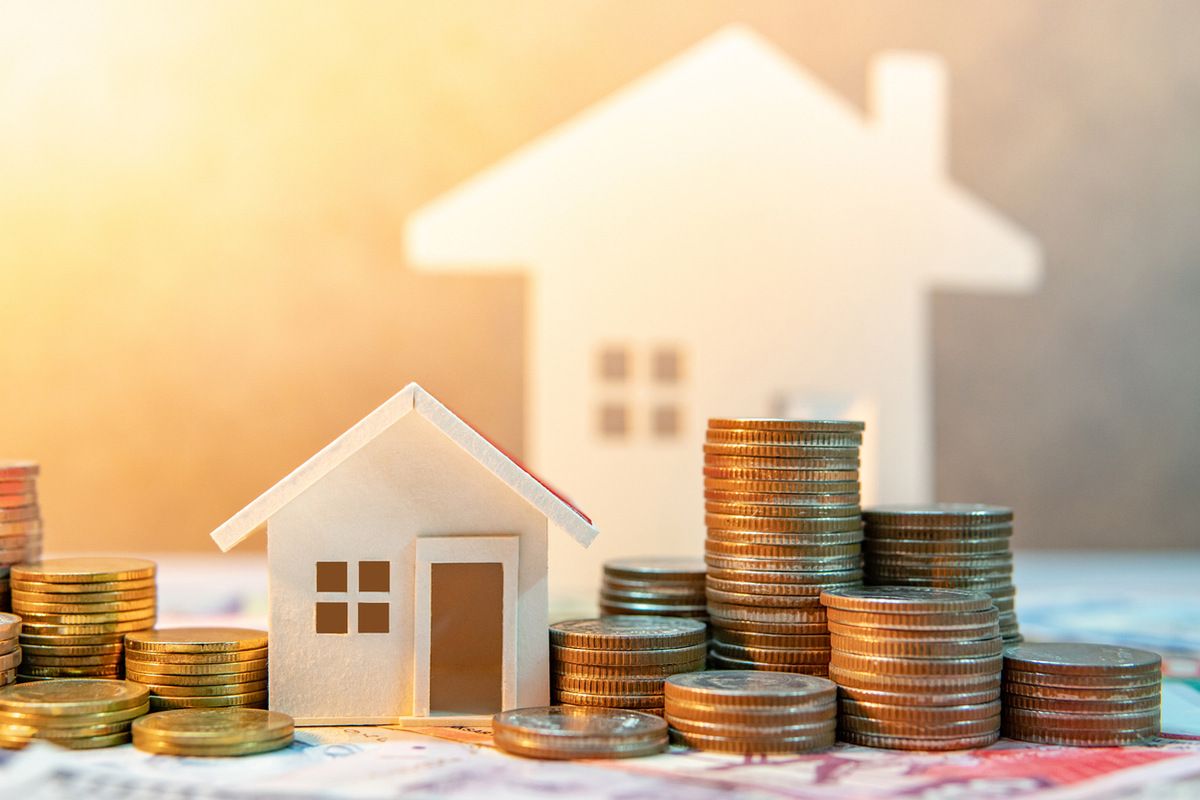

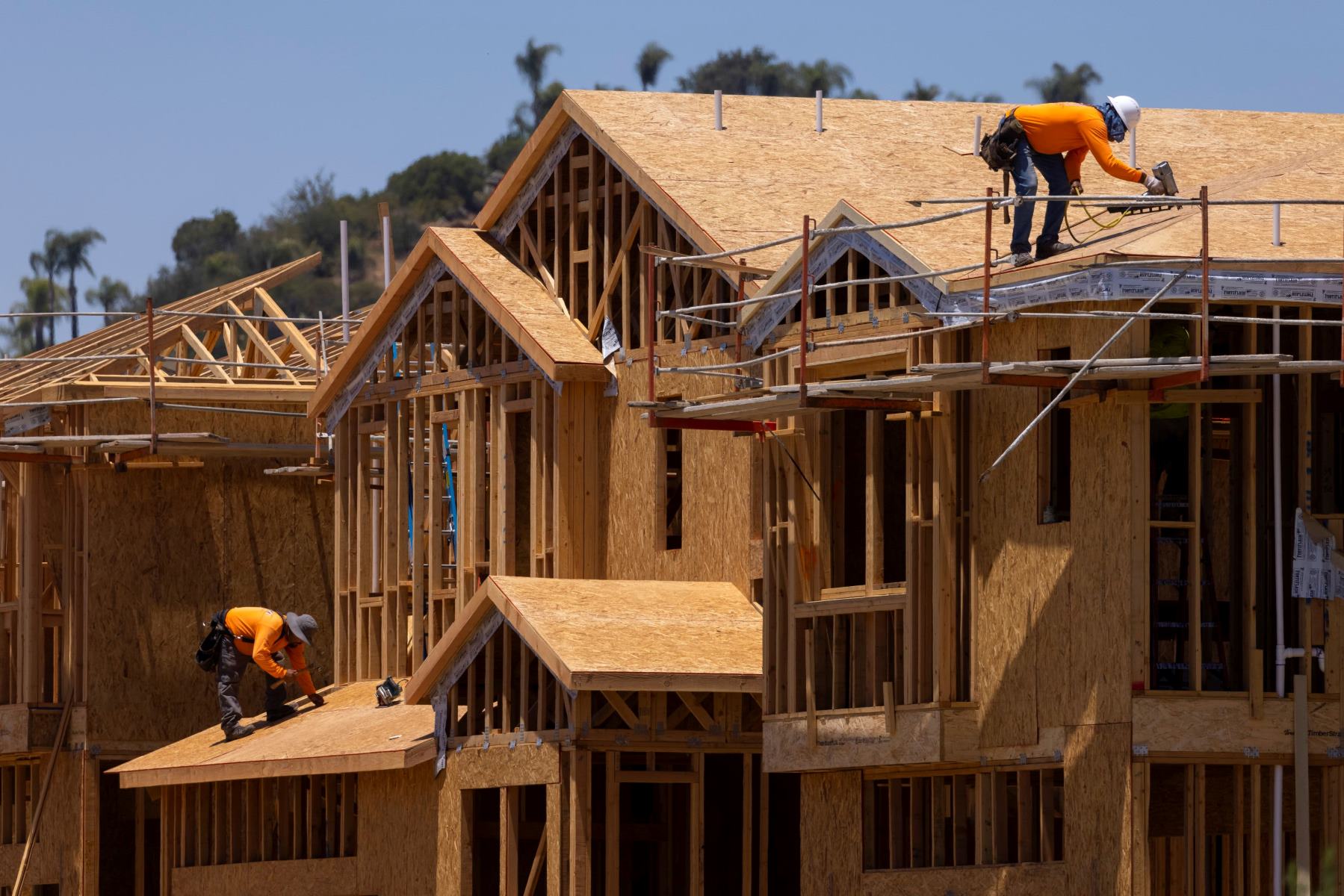
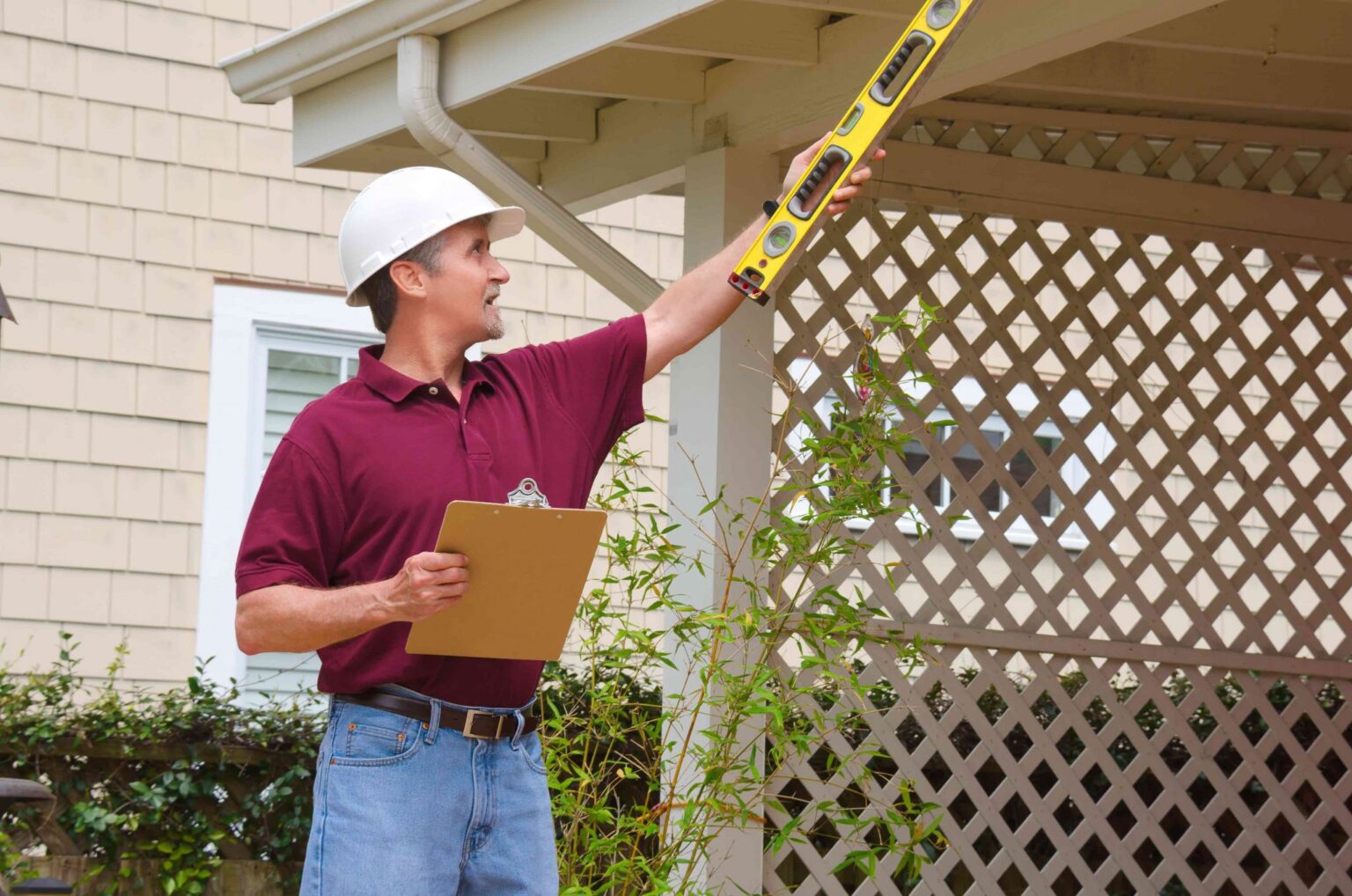

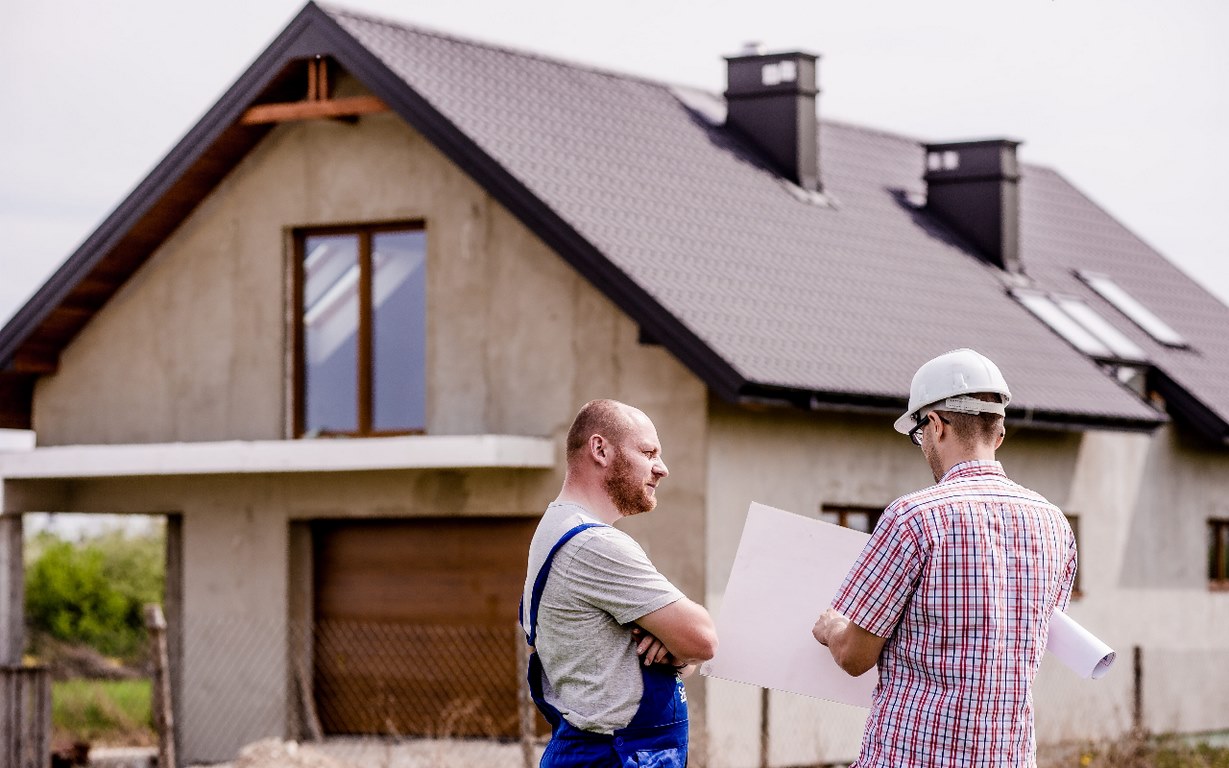
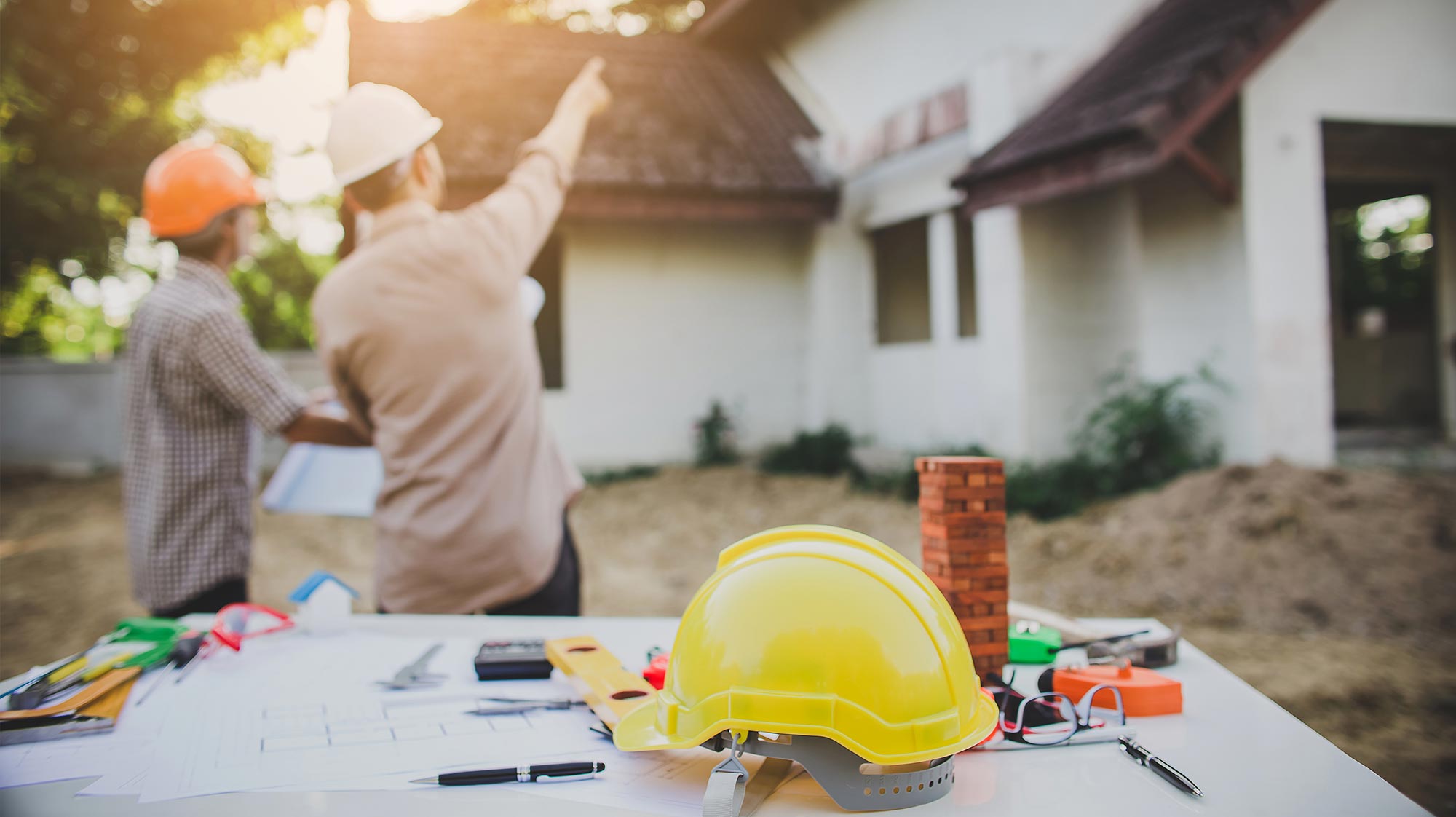
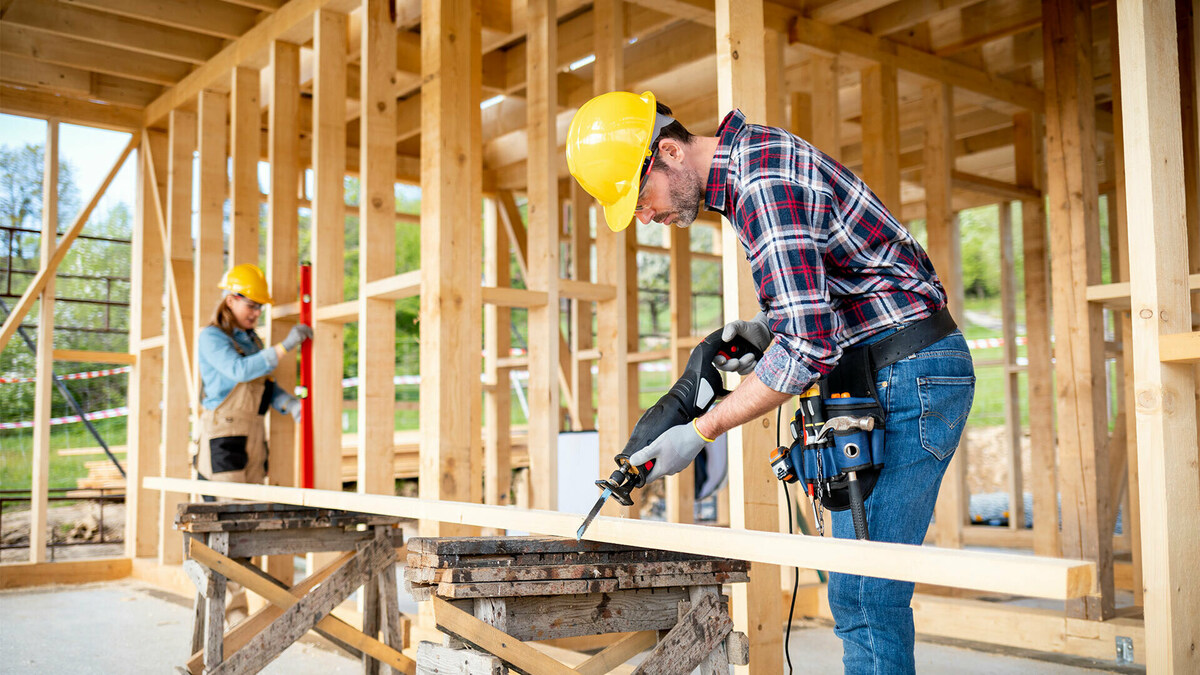
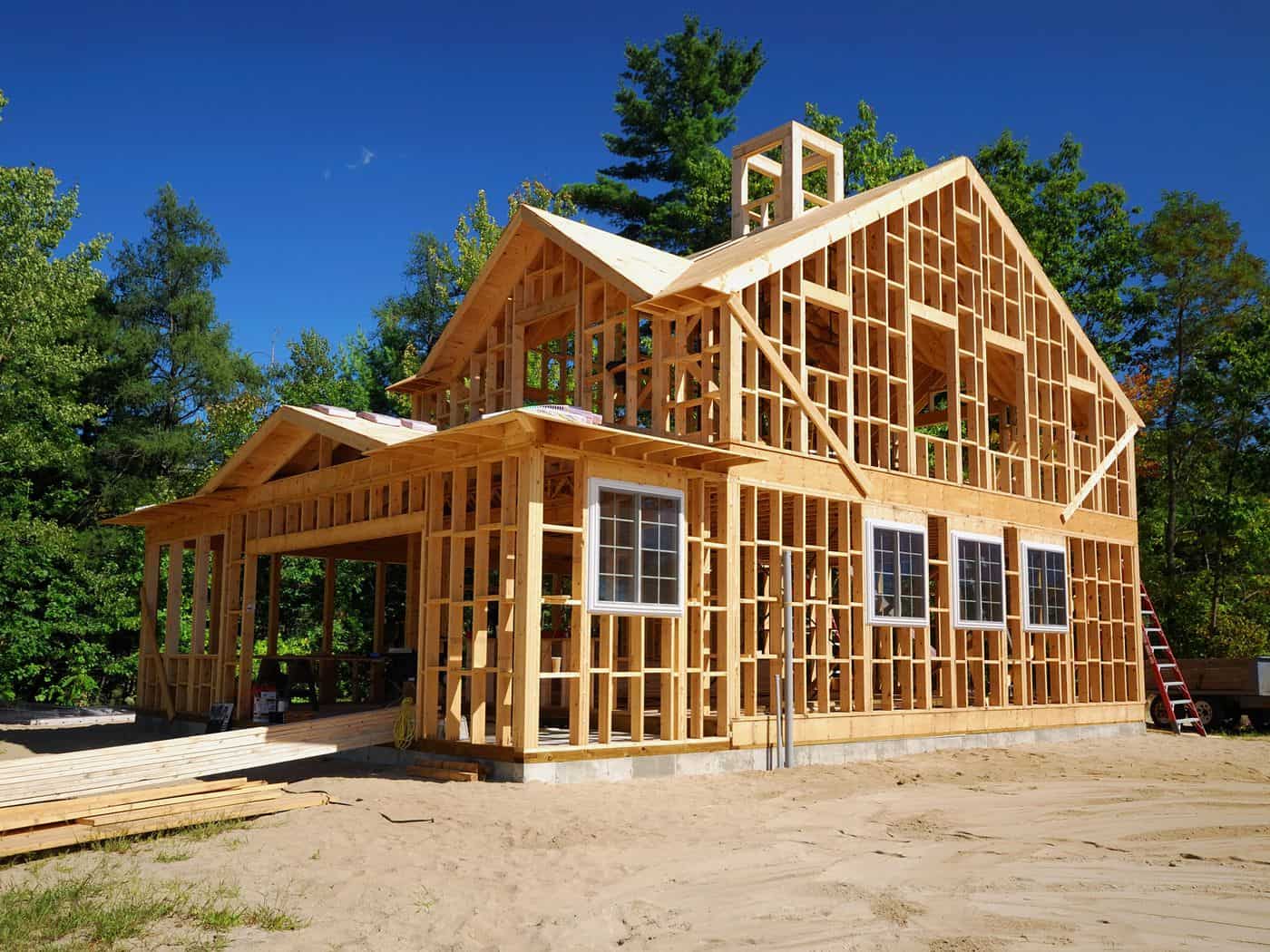



0 thoughts on “Must-Haves When Building A House”